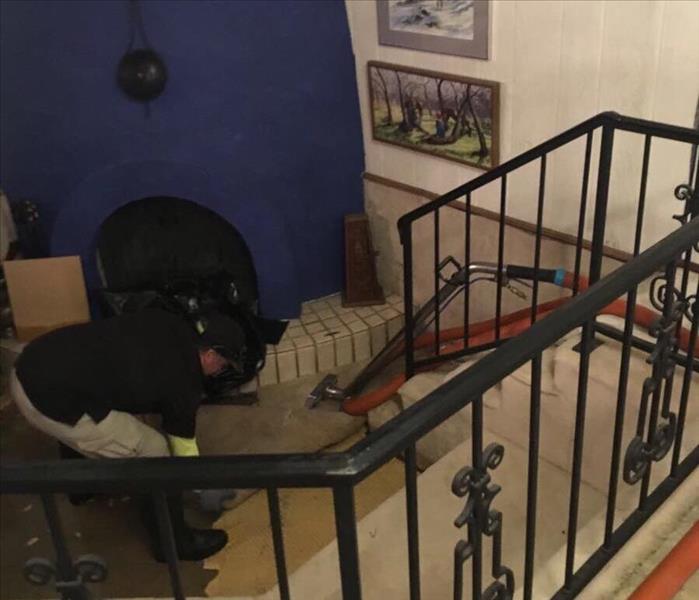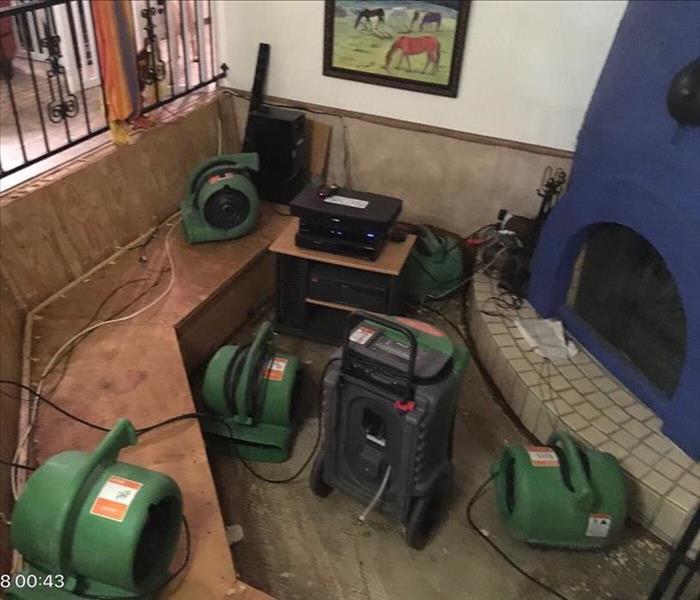
Step 4: Drying and Dehumidification
Our Water Damage Restoration Process
Once the excess water has been removed from your property by our expert technicians, the floors and walls may appear dry, but a quick inspection will reveal they are still wet to the touch and the job is actually far from complete. Nearly all building materials, like wood, drywall, and flooring, are porous and retain water to some extent. This retained water can cause the materials to break down, warp, or cause mold damage and odors. The water remediation specialists at SERVPRO of Central Phoenix understand this and know there are still additional steps that need to be taken to completely dry out a home or commercial property after any kind of water damage.
Drying / Dehumidification
Our Professionals will use room measurements, temperature, and relative humidity to determine the optimal number of air movers and dehumidifiers to dry your home or business. We’ll carefully monitor the progress using moisture meters until the materials return to acceptable drying goals.
- Use Dehumidification Equipment
- Use Monitoring Equipment to Track Progress
Monitor Floor and Walls
We check the moisture levels to monitor the drying process.
- Monitor Floors
- Monitor Walls
Drying Equipment
- Industrial-grade dehumidifiers help prevent secondary water damage like swelling and warping of floors, walls, and furniture.
- High-speed air movers create airflow across walls, carpets, pads, and furniture, which accelerates the evaporation of moisture.






 24/7 Emergency Service
24/7 Emergency Service


